 By: Sylvia Meljem, Yanira Petrides y Gabriela Soní
By: Sylvia Meljem, Yanira Petrides y Gabriela Soní
The etymology of words can provide important knowledge and convey an experience directly from both the external and internal world. Human beings use language to understand, interpret and even transform the world (González, 1996). The concept and the term “responsibility” is not modern and appears for the first time in the English and French languages in the year 1787. The first usage of the term was political, in expressions such as “government responsibility” or “responsibility of the government” to express the nature by which the constitutional government acted under the control of the citizens. (Abbagnano, 1989). Social responsibility means the action of responding to society through the consequences of our acts in the exercise of freedom. Corporate social responsibility (CSR) is the specific response of a company to society – including both the positive and negative impact of its activities – which contributes to sustainable development. Today there are conflicting positions regarding the regulation and content of CSR reports demanded of the companies. This paper briefly describes the various reporting guidelines used throughout the world and their outlook.
Corporate Social Responsibility
To comply with the definition of CSR mentioned above, companies must increase their willingness to go beyond the implementation of a corporate government scheme, that is, the secular principle of exclusively protecting the owner (here, the shareholder). In contrast, corporate social responsibility seeks to use private property to achieve a social benefit, which both legal and corporate cultures regard with extreme suspicion. (Arjona, 2010).
This dilemma responds to the question of whether a company exists for the sole purpose of generating profits or if the adoption of socially responsible practices is a strategy that helps to generate value and, therefore, long-term sustainability.
There are many critics of capitalism who oppose its selfish principles. However, as stated by the philosopher André Comte-Sponville: “Capitalism is neither moral nor immoral, it is simply, amoral.” Capitalism seeks efficiency and effectiveness in the use of resources, and the practices of social responsibility do not go against this: doing the right thing does not have to be a non-profitable or non-competitive exercise.
In this regard, CSR has been the subject of several investigations in the last decades. In a review of the literature on the topic by Margolis and Walsh in 2001, they found 86 studies whose objective was to analyze the effects of CSR (independent variable) on the financial performance of companies. Most of the results (53 percent) pointed toward a positive relationship between CSR and financial performance. In contrast, only 5 percent of the investigations found a negative relationship between these variables; 24 percent, no relationship; and 18 percent, a mixed result.
Several authors have devoted themselves to studying the existence of a causal relationship between CSR and financial performance. Some argue that CSR improves financial performance by strengthening the reputation of the brand and benefitting its stakeholders. Others argue that companies with an outstanding financial performance have idle funds that can be devoted to sustainable practices. There is also the vicious circle theory, which establishes that CSR is both the cause and the consequence of a good financial performance, considering everything else constant.
In Mexico, there is not yet enough information about CSR and its relation to the competitiveness of companies. Some studies, such as the one conducted by Husted and Salazar, analyzed the practices of CSR of 52 firms in Mexico, as well as their ability to create competitive advantages. They found that of the total number of companies surveyed, 86 percent was involved in social action, with the area of health considered to be of greatest importance, followed by poverty relief programs and sports. They also reported that only 36 percent of the companies in their study actually measured the results of their activities, and that the Internet and the newspaper were the means utilized the most to publicize their social programs.
In most studies, the main problem has been how to measure Corporate Social Performance (CSP). There are various models, but the two most common are:
- Corporate Reputation Index – This consists of evaluating the companies using certain attributes of the same to obtain a ranking. Fortune magazine publishes a yearly evaluation of more than 300 companies in 40 industries in the United States. This index has been a source of much criticism, because the attributes tend to be defined in abstract terms imposed by the researchers, leaving room for the personal interpretations of the evaluators. In addition, this is not a specific index for CSP, but for management in general.
- Content Analysis – It assesses the extent to which CSP activities of the companies are published in various documents, especially in their annual report. The advantage of this technique is that once you choose the variables (subjectively), the process is more objective. However, it presents some limitations, as the analysis of content only indicates what companies say they are doing, which may differ from what they are actually doing.
Neither model represents very precise measurements for estimating the CSP, but so far these are the best tools we have.
In addition to the effort to measure the CSP and its possible correlation with the company’s financial results, there is also strong pressure internationally on the topic of socially responsible consumption, and training and education of CSP. The greatest promoters in this area have been the demands and expectations of the stakeholders, voluntary standards and international law. Today, new areas demanding accountability in reaching a holistic approach in CSP, include:
- Geopolitics – geographical breakdown of the markets, investments in countries in conflict, treaties with non-democratic countries.
- Environment – waste, emissions, recycling, water and energy consumption.
- Human and labor rights - child labor, forced labor, rate of absenteeism, discrimination.
- Animal rights – animal experimentation, organic food, sustainable fishing.
- Unethical practices – corruption, smuggling, bribery, fraud, money laundering.
To help companies measure their achievements and report on the progress in each one of the areas mentioned above, a series of global and national standards have been developed. The major standards used are described below:
- The GRI is a Global Reporting Initiative that emerged, on the one hand, from the United Nations Environment Program, and on the other, from the Coalition for Environmentally Responsible Economies. Its purpose is to ensure the quality, rigor and utility of sustainability reporting, which can be verified externally (Soní, 2010). The GRI launched the guidelines for sustainability reporting, which includes three elements of CSP – economic, environmental and social performance. According to a survey conducted by KPMG, 80 percent of the 250 companies of the Global Fortune publish information on environmental, social and corporate governance issues; 70 percent of the companies presenting sustainability reporting around the world use the guidelines of the GRI (KPMG, 2008).
- The Global Compact is a voluntary international alliance founded by the United Nations at the Economic Forum in Davos, in 1999. This initiative seeks to promote the idea that the involvement of companies in social and environmental practices benefits both business and society in the long term. This pact is composed of 10 universally accepted principles in the areas of human rights, labor conditions, environment and anti-corruption. In 2007, the Global Compact, in partnership with the GRI, published a guide that incorporated the 10 principles of the Global Compact with the GRI guidelines. This alliance between the two initiatives is very important from the point of view of comparability. It should be emphasized that the two initiatives are complementary; however, the Global Compact does not oblige, but only recommends, the use of the GRI (Global Pact, 2007).
- The World Business Council for Sustainable Development (WBCSD) was founded in 1995. It is an association of 200 international companies from more than 35 countries and 20 industrial sectors that share a commitment to economic growth, ecological balance and social progress. The WBCSD supports the communication of the efforts and accomplishments through the guidance of the GRI. It has also developed a set of eco-efficient indicators, which combine economic and ecological aspects. The objective of these indicators is that they be flexible and general, so that they can be used for measuring, reporting and interpreting the level of eco-efficiency achieved by companies in different sectors (Soní, 2010)..
- In 2004, the Mexican Institute of Standardization and Certification (IMNC) published the Mexican standard of social responsibility..This rule establishes procedures for the implementation and follow-up of CSR practices in public and private companies. The guidelines included in this document were used as a basis for generating the international standard ISO 26000, which is an international standard in development, elaborated by the International Organization for Standardization that will provide guidance and recommendations for implementing CSR operational practices. It is hoped that what was published in September 2010 will be for voluntary use and will not be certifiable. It includes aspects of corporative governance, transparency, human rights, labor practices, consumer protection, environment and community involvement. (Soní, 2010)..
So far, 918 companies in the world report under the GRI guidelines. There are 207 member organizations of the SBCSD, of which 90 are using the GRI methodology. However, it still lacks the use of one standard, which will enable the integration of different perspectives in a single report (Soní, 2010).
On the other hand, in addition to the previously mentioned reports, there is a sustainability index, which in September 2011 celebrated its 10 years of existence. It has taken a decade of changes for companies to be convinced that a socially responsible management ends up creating value in the long term. The recent summit in Copenhagen and the Sustainable Economy Law exemplify the importance of this new management model in the political and economic agenda (De Cubas & Sepúlveda, 2010). The Dow Jones Sustainability Index (DJSI) is the first global index that analyzes the financial performance of the top 10 percent of the 2,500 companies listed on the Dow Jones global index in terms of sustainability. This index was developed in collaboration with Dow Jones Indexes organizations from the United States; the Stoxx Limited, from Europe; and the Group SAM (Sustainable Asset Management), a Swiss company and pioneer in responsible investment. (Soní, 2010).
Conclusions
The international experts in the field of Corporate Social Responsibility who met last March in Palma de Mallorca agreed in their demand for a certain degree of compulsion or regulation in the social responsibility reports that companies produce (Servimedia,es, 2010). We can end this paper by emphasizing that the human capacity for selflessness, rising above merely practical or pragmatic ends, is in effect an eminent expression of freedom. The danger inherent in so much reporting is that it can provoke what Nicol calls “reasons beyond our control,” that is, complying solely for pragmatic purposes to ensure the survival of the species, which is not the same as the existence of the human community (González, 1996). Responsibility is not mere causality, it is the possibility of foreseeing the effects of our own behavior and if necessary changing it to prevent a negative outcome. (Abbagnano, 1989). ?
Bibliography
Abbagnano, N. (1989), Diccionario de Filosofía (2a Edición en Español, 7a Reimpresión ed.). México: Fondo de Cultura Económica.
AliaRSE. (s.f.). AliaRSE. Recuperado el 25 de Marzo de 2010, de AliaRSE Alianza por la Responsabilidad Social Empresarial en México: http://www.aliarse.org.mx
Arjona, C. (21 de Marzo de 2010). La responsabilidad que interesa. (http://www.elpais.es, Ed.) El País – Nacional, p. 34.
Carazo Madrid, J. (22 de Marzo de 2010). Un encuentro para configurar la futura RSC europea. (C. N. Días, Ed.) Cinco Días, p. 18.
De Cubas, L., y Sepúlveda, R. (7 de Febrero de 2010). Las grandes empresas incorporan la RSC a sus estrategia de negocio. ABC, p. 8.
Elkington, J. (1998). Cannibals with Forks: The Triple Bottom Line of 21st Century Business. Estados Unidos: New Society Publishers.
Gaos, J. (1982). Fragmentos de Heráclito. México: Enrique Hülsz Piccone.
González, J. (1996). El ethos, destino del hombre. México: FCE, FFyL, UNAM.
Husted, Bryan William y Salazar, José de Jesús (2005). Un estudio exploratorio sobre la estrategia social de empresas grandes ubicadas en México. Nuevo León: Instituto Tecnológico y de Estudios Superiores de Monterrey.
KPMG. (2008). International Survey of Corporate Responsibility Reporting. Reino Unido.
Margolis, Joshua y James Walsh. (2001). People and Profits: The Search for a Link Between a Company´s Social and Financial Performance. Estados Unidos: Lawrence, Erlbaum Associates.
Pacto Global. (2007). Making the Connection. The GRI Guidelines and the UNGC Communication on Progress. Estados Unidos.
Servimedia.es. (26 de MARZO de 2010). Servimedia España Noticias. Recuperado el 29 de MARZO de 2010, de http://www.servimedia.es/Noticias/Seccion.aspx?seccion=24
Soní, G. (2010). Aplicación de Prácticas de Responsabilidad Social: Una perspectiva corporativa en México. México: ITAM Tesis.


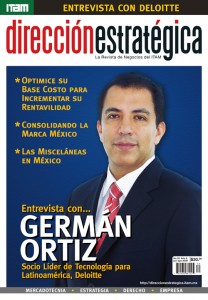


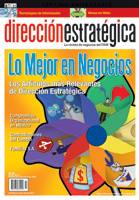


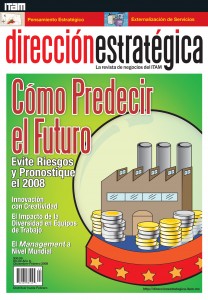


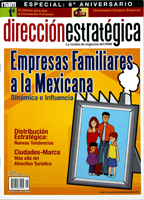
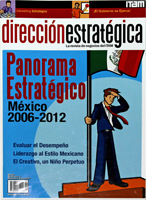
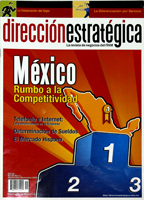

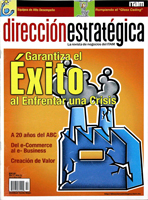
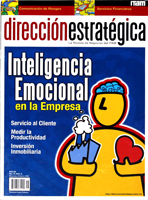
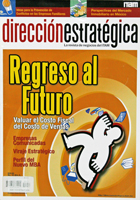
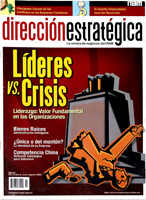






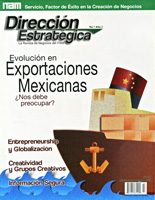
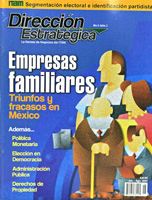



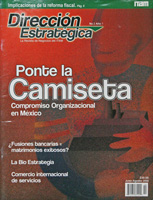
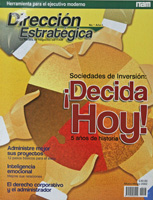
One Trackback
[...] de las Normas Internacionales en Empresas Mexicanas (343)32. Diciembre – Febrero 2010 (335)Transparencia y Responsabilidad Social Corporativa (296) [...]